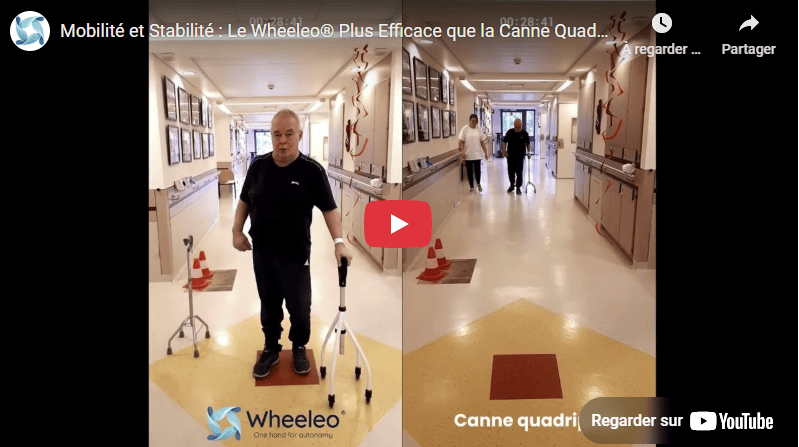
Comparison of quadruped cane vs Wheeleo®: a clear impact on walking quality
In this clinical case, we compare the use of a quadruped cane to that of the Wheeleo®, a one-handed walker, in a patient with hemiparesis.
In both situations, walking is organized according to a two-point gait pattern, alternating support between the two lower limbs. However, despite this apparent similarity, the performance observed with the Wheeleo® is significantly superior.
With the Wheeleo®, spontaneous walking speed is significantly higher. This improvement is explained by an increase in both step frequency and amplitude. The constant and rolling support of the Wheeleo® promotes a more fluid, rhythmic, and less choppy progression than that obtained with a quadruped cane, which is often more unstable and constraining.
The gap widens even further during the turn. With the quadruped cane, the patient adopts a fragmented three-point gait, which considerably slows down the pivot and delays the resumption of walking in the corridor. Conversely, the Wheeleo® allows for a more natural, quick, and secure pivot, thanks to its maneuverability and the continuity of movement it maintains.
This comparison illustrates the benefit of an adapted technical aid, which is not limited to securing the gait, but actively contributes to improving performance. Even when the gait pattern remains two-point, the choice of support can transform the overall efficiency of movement.
Please fill in this short form so that we can contact you to arrange a test.